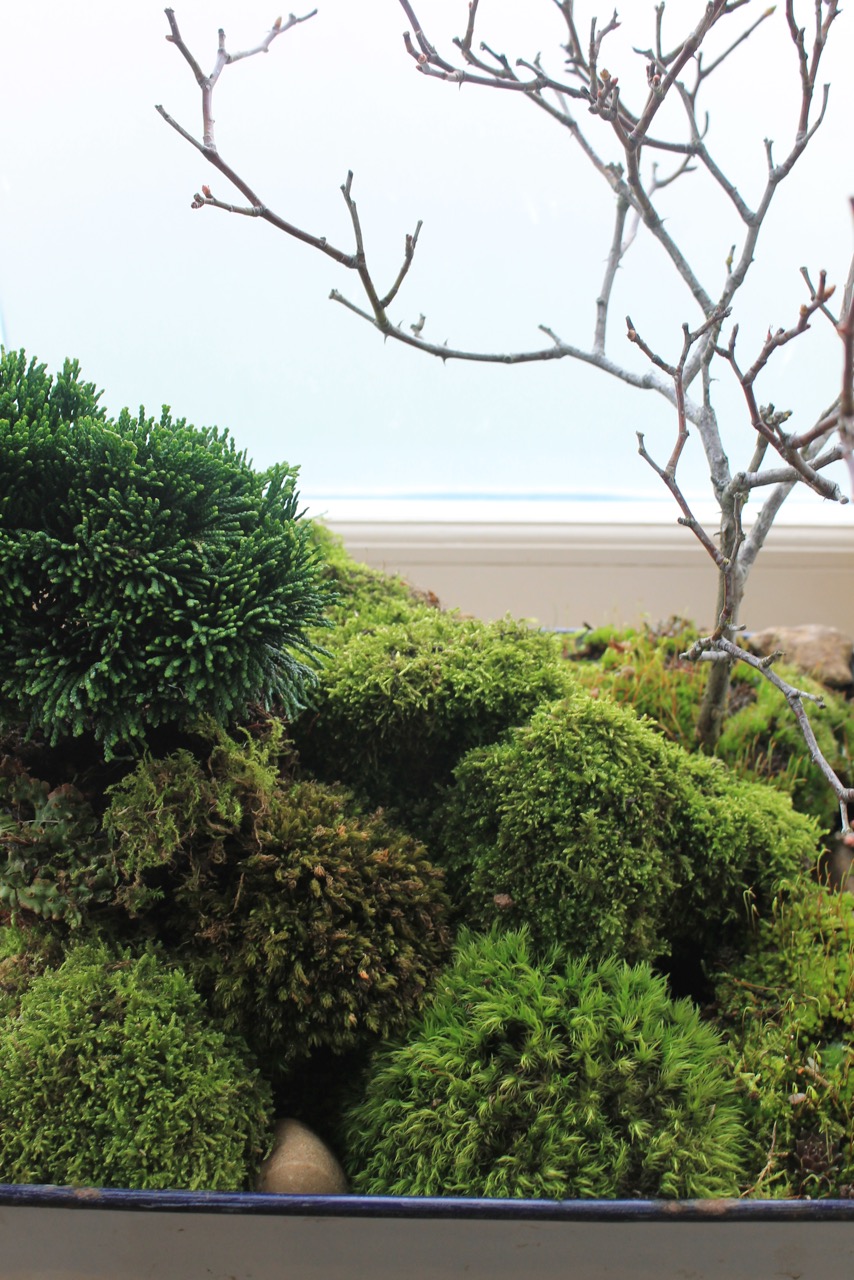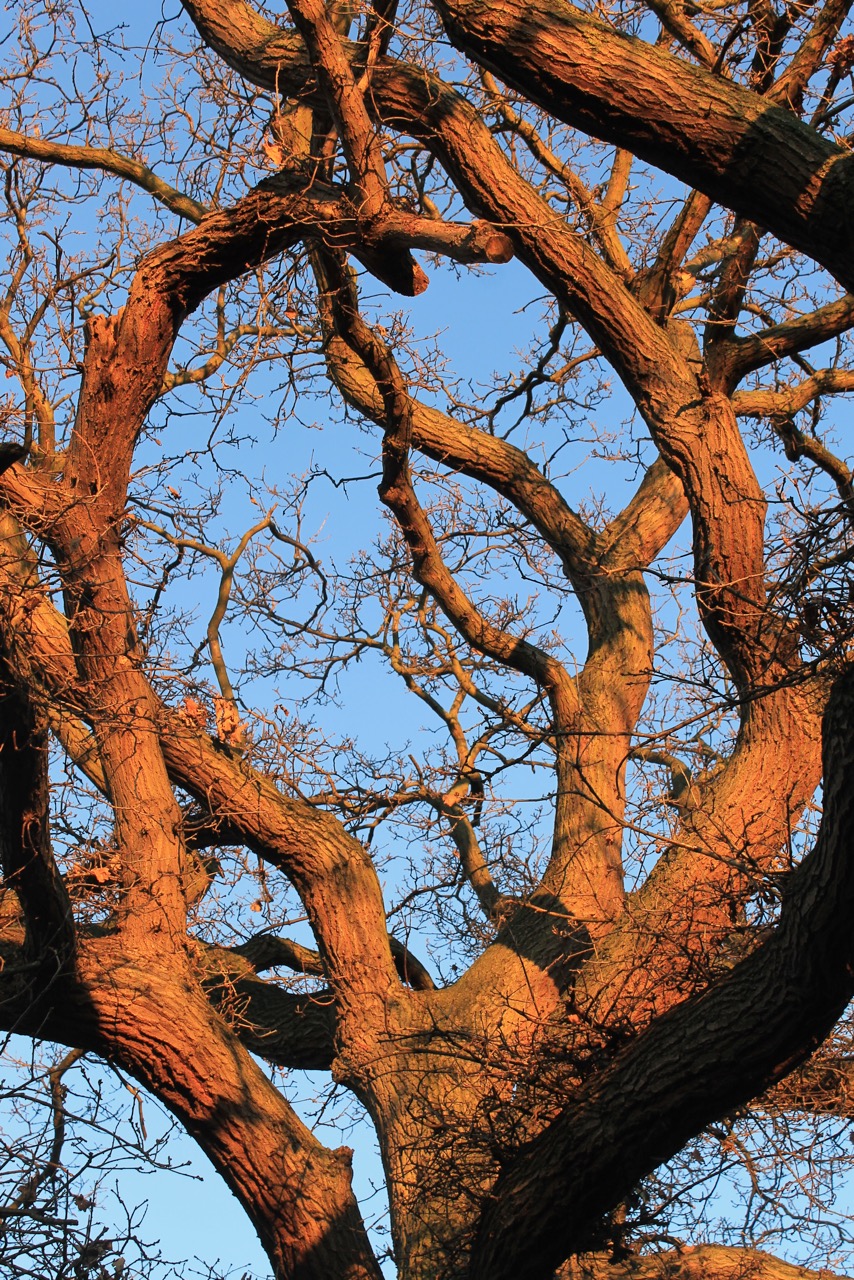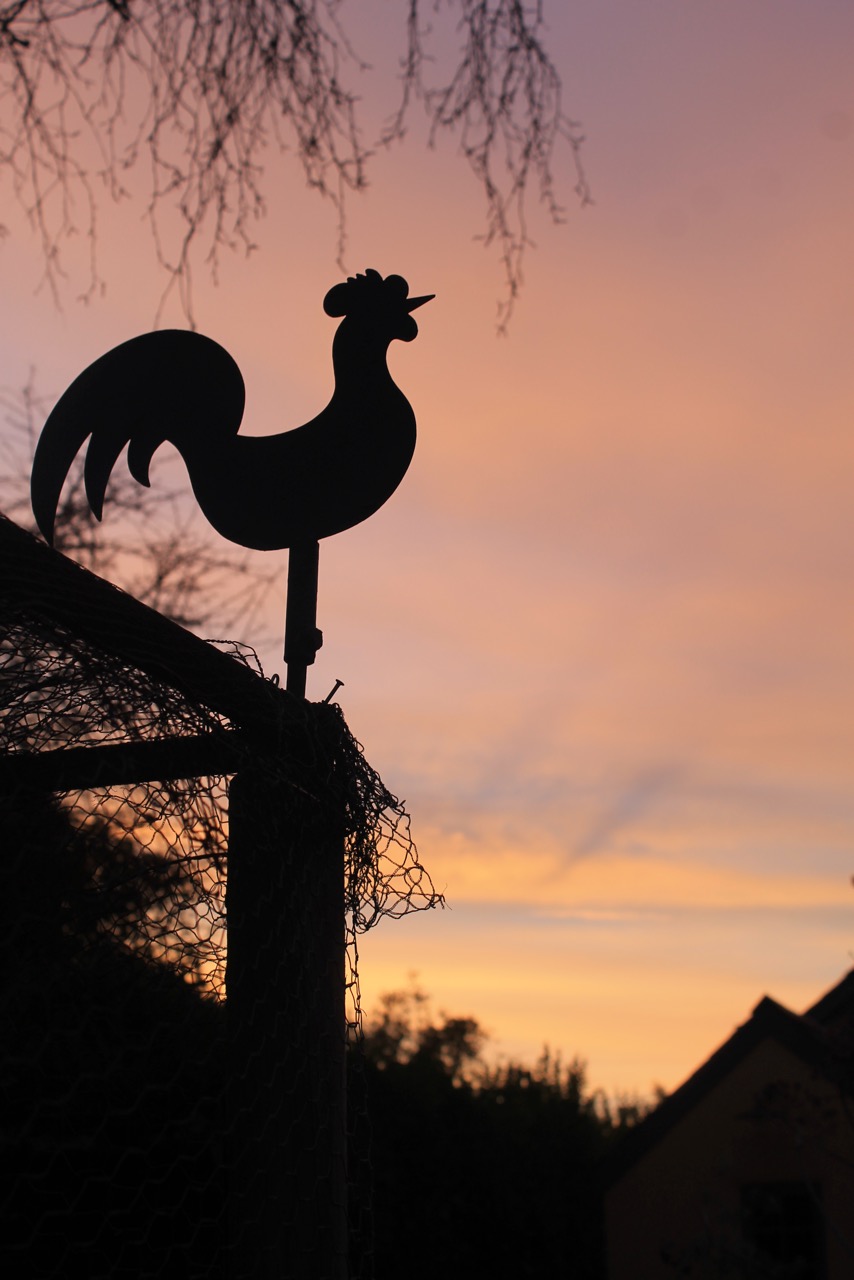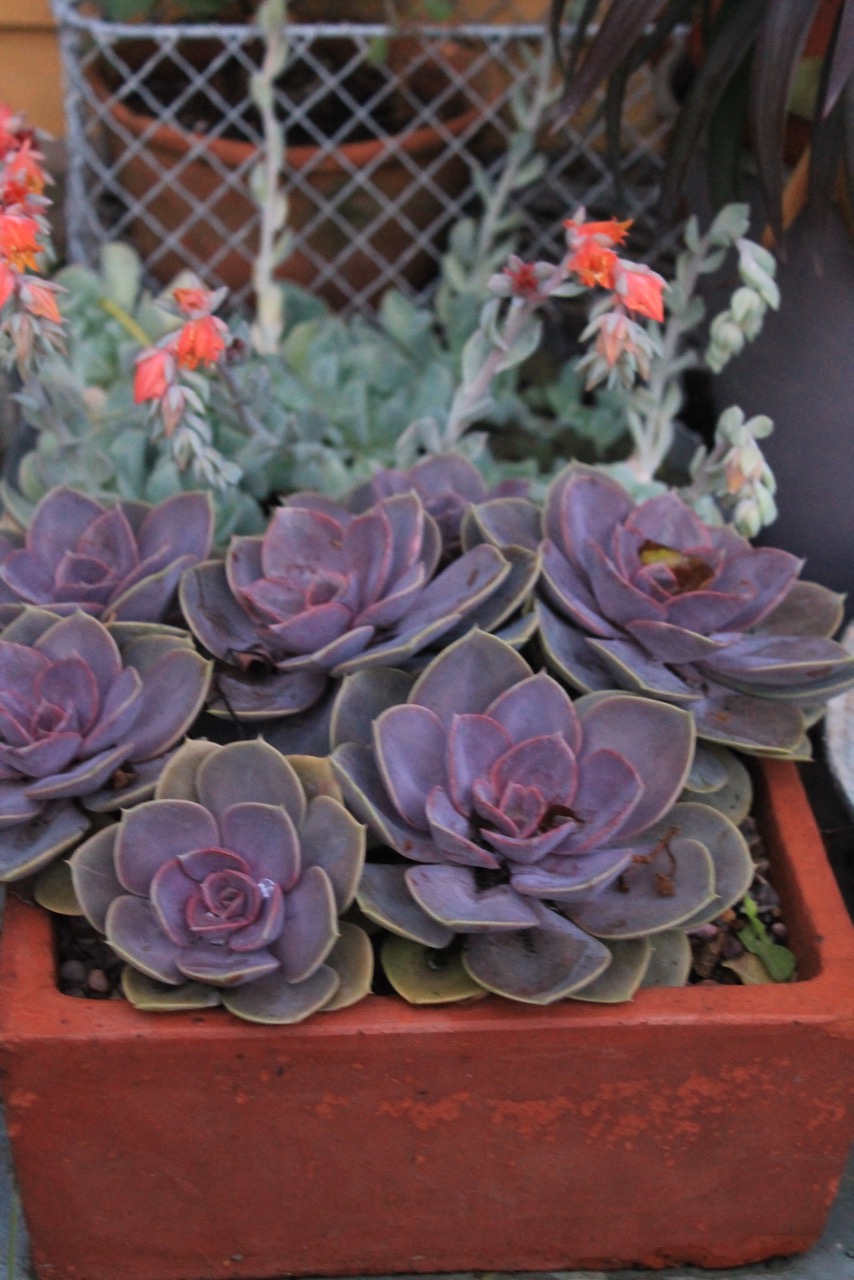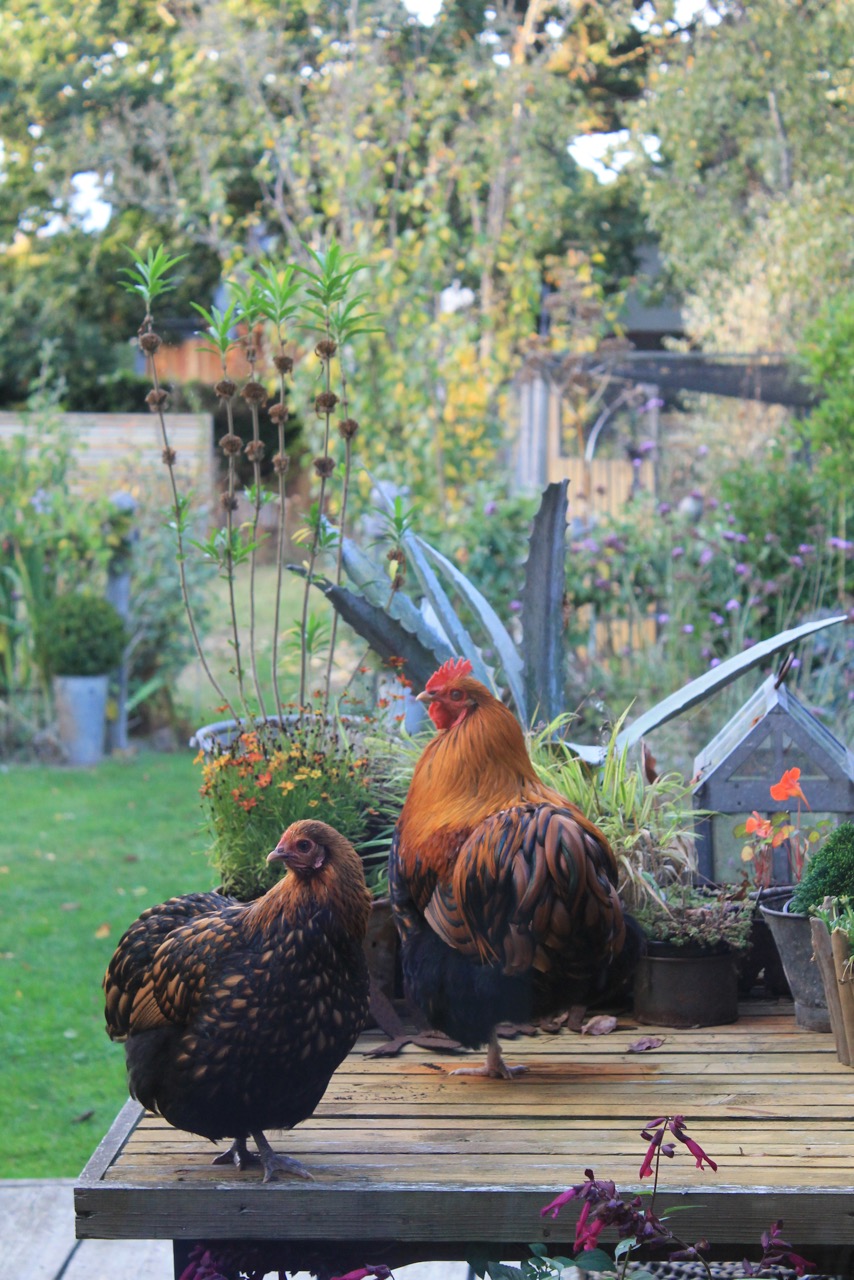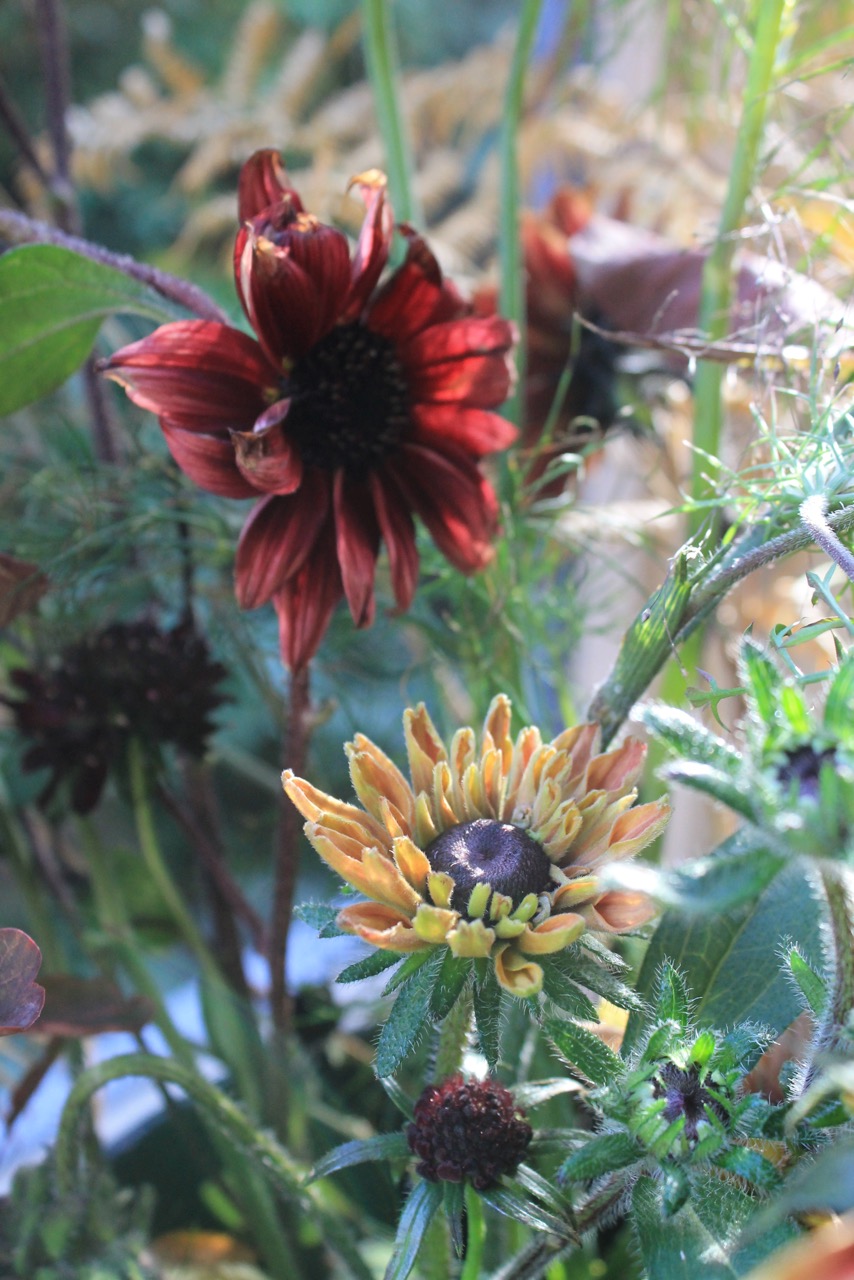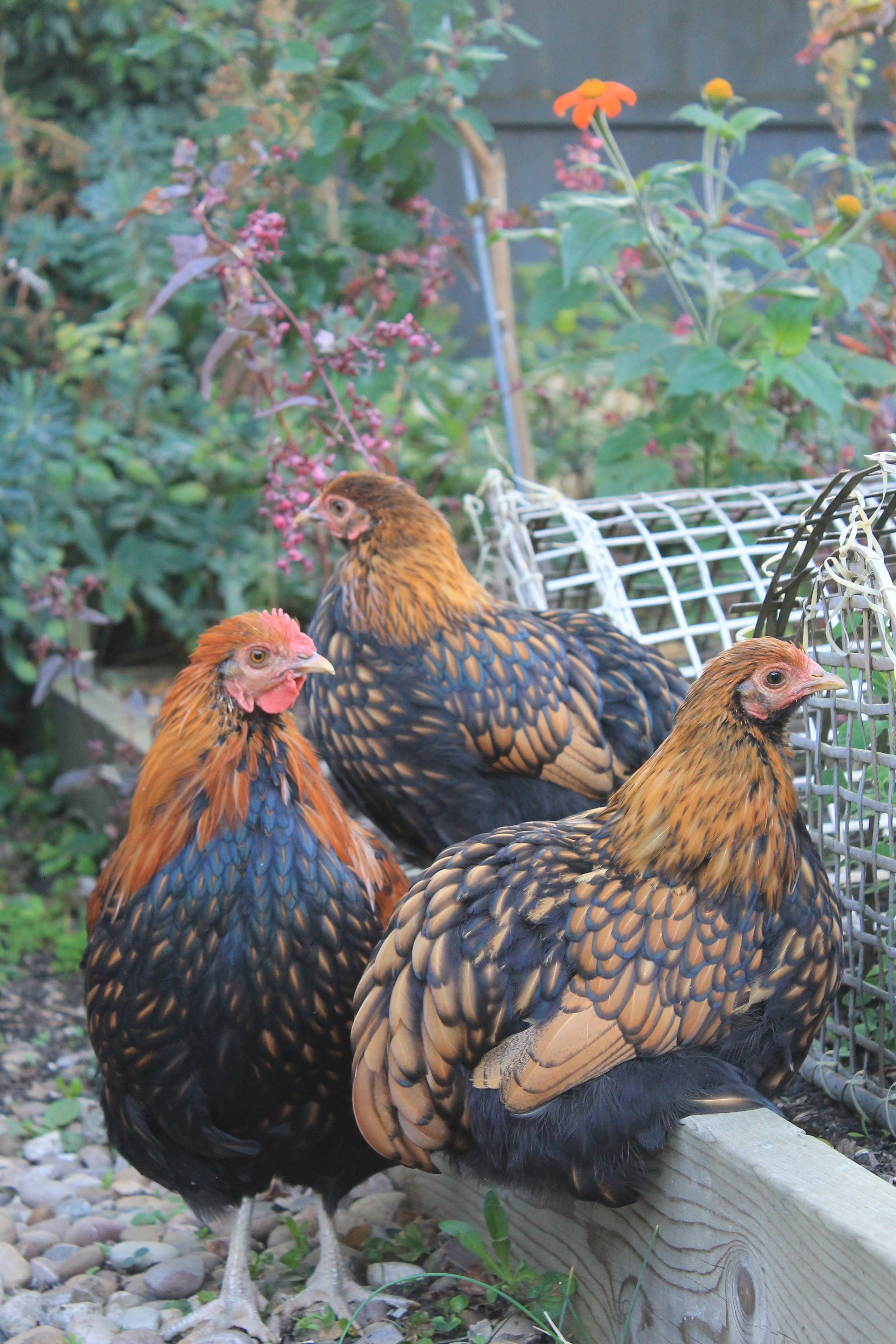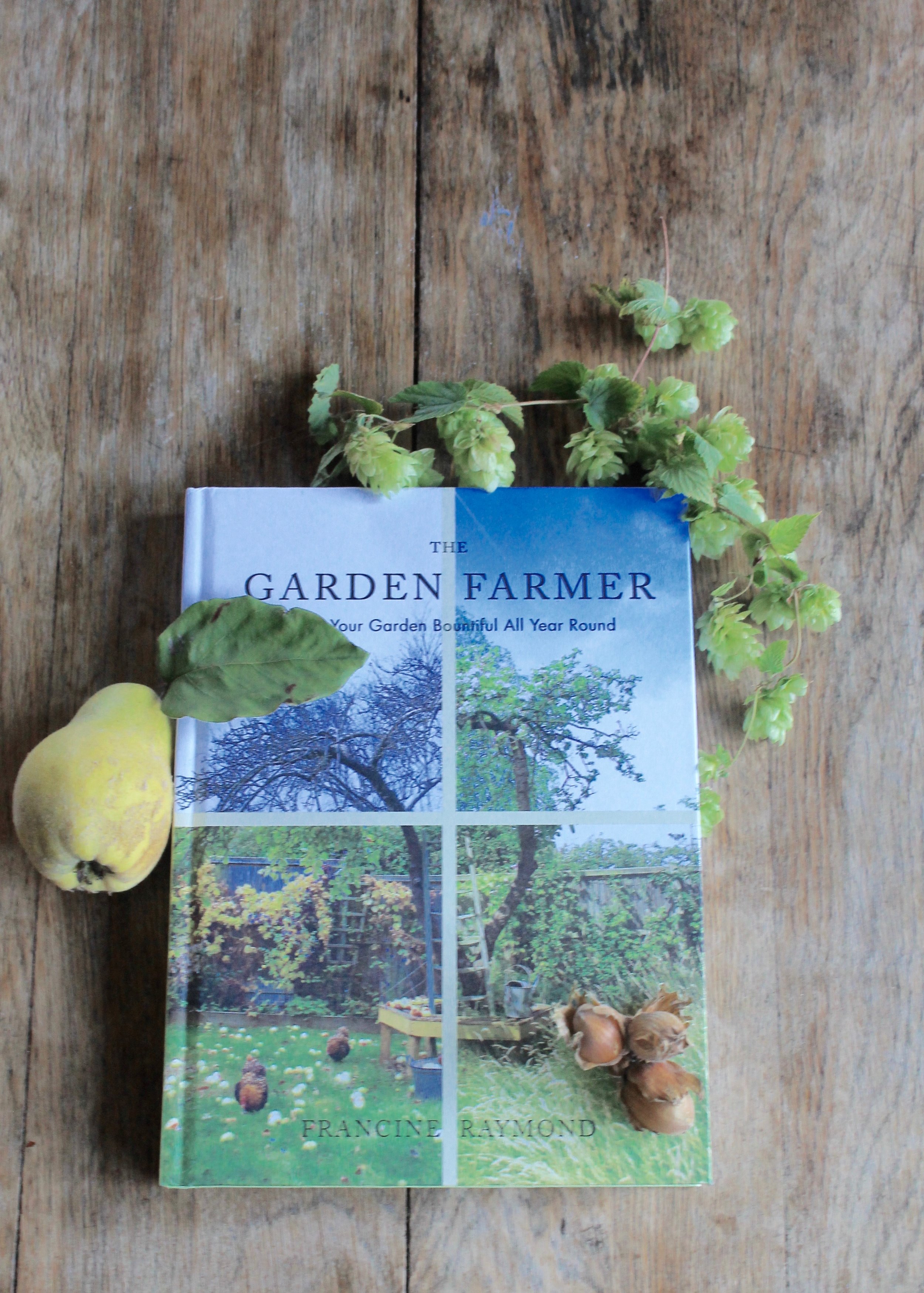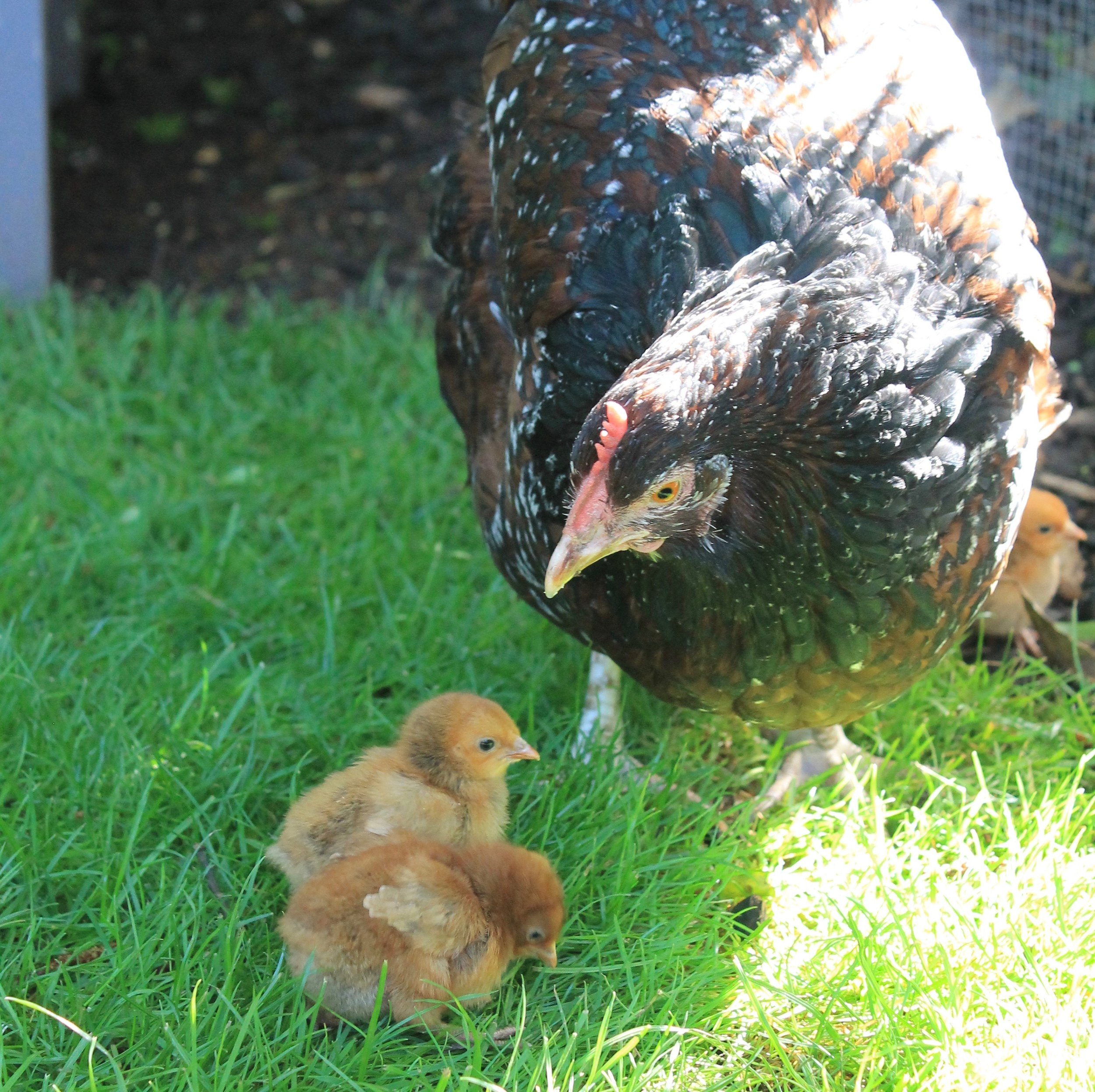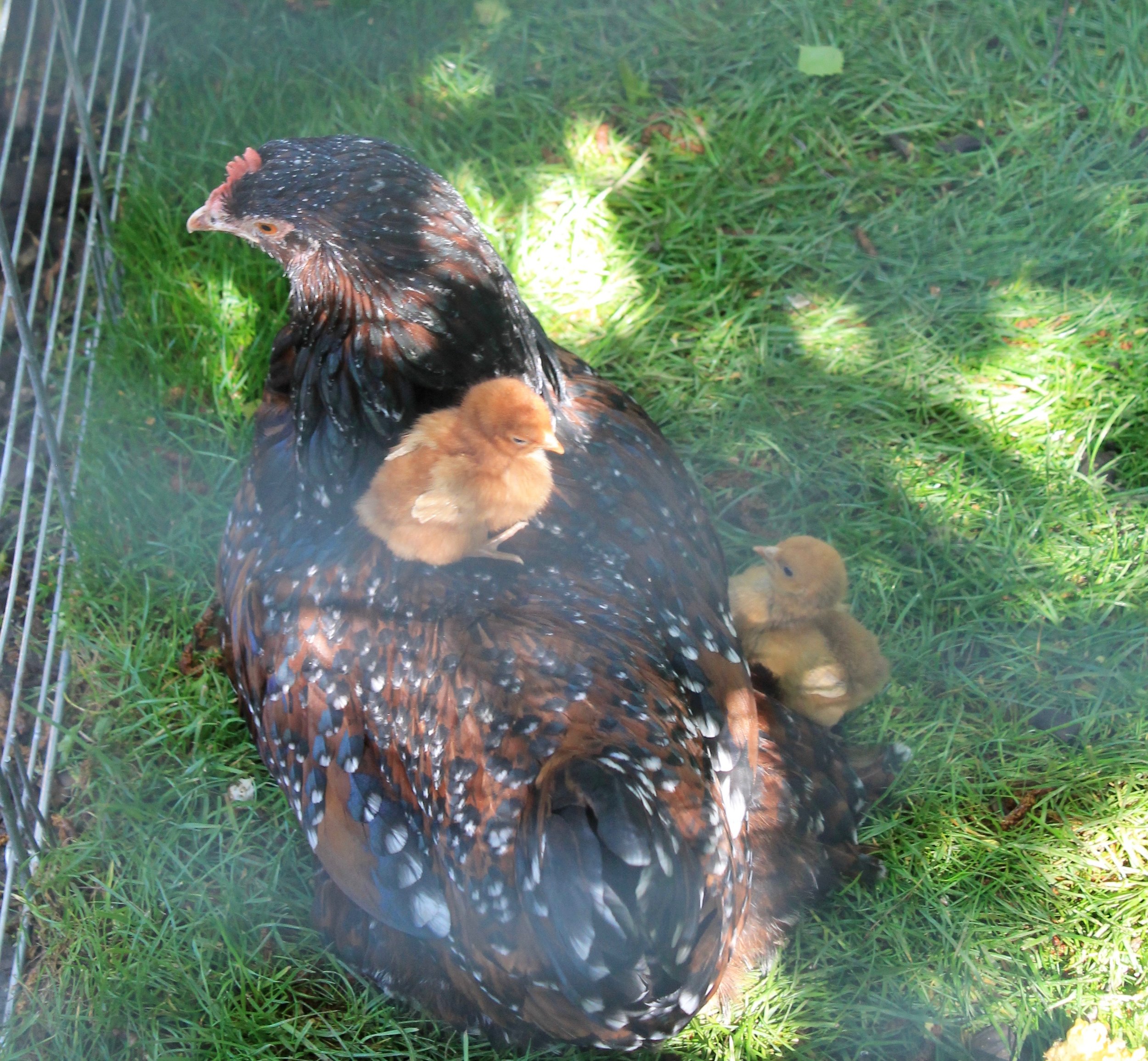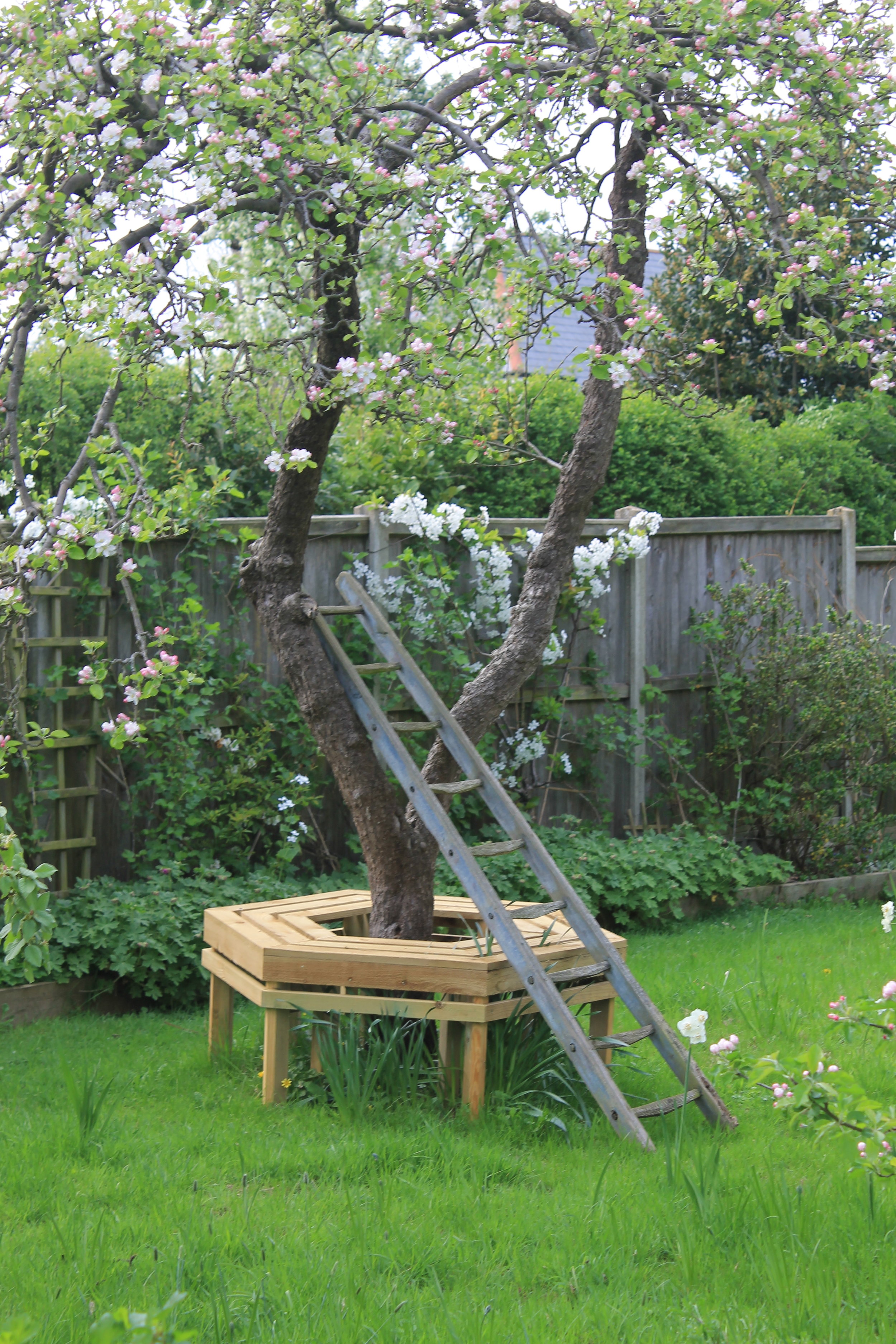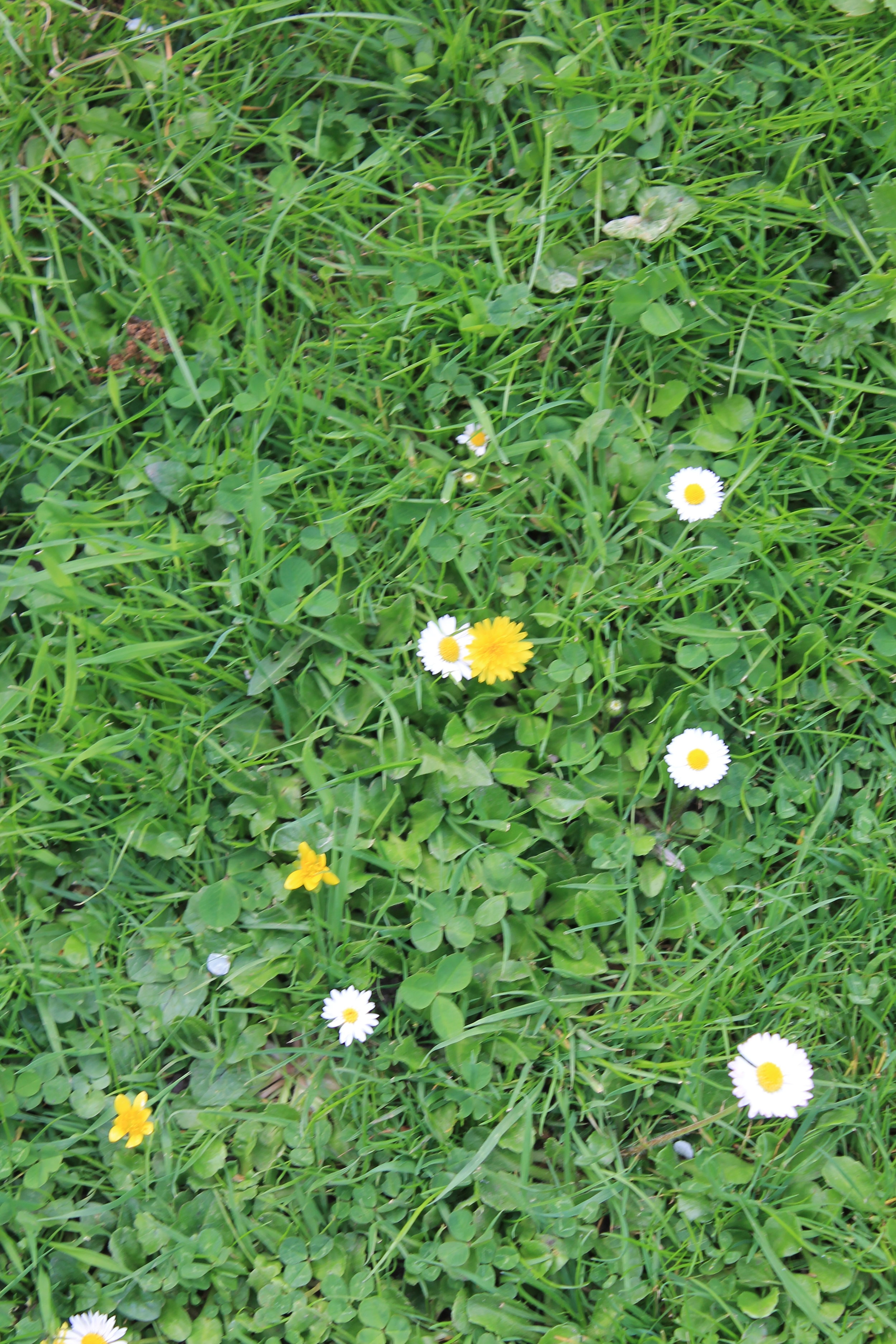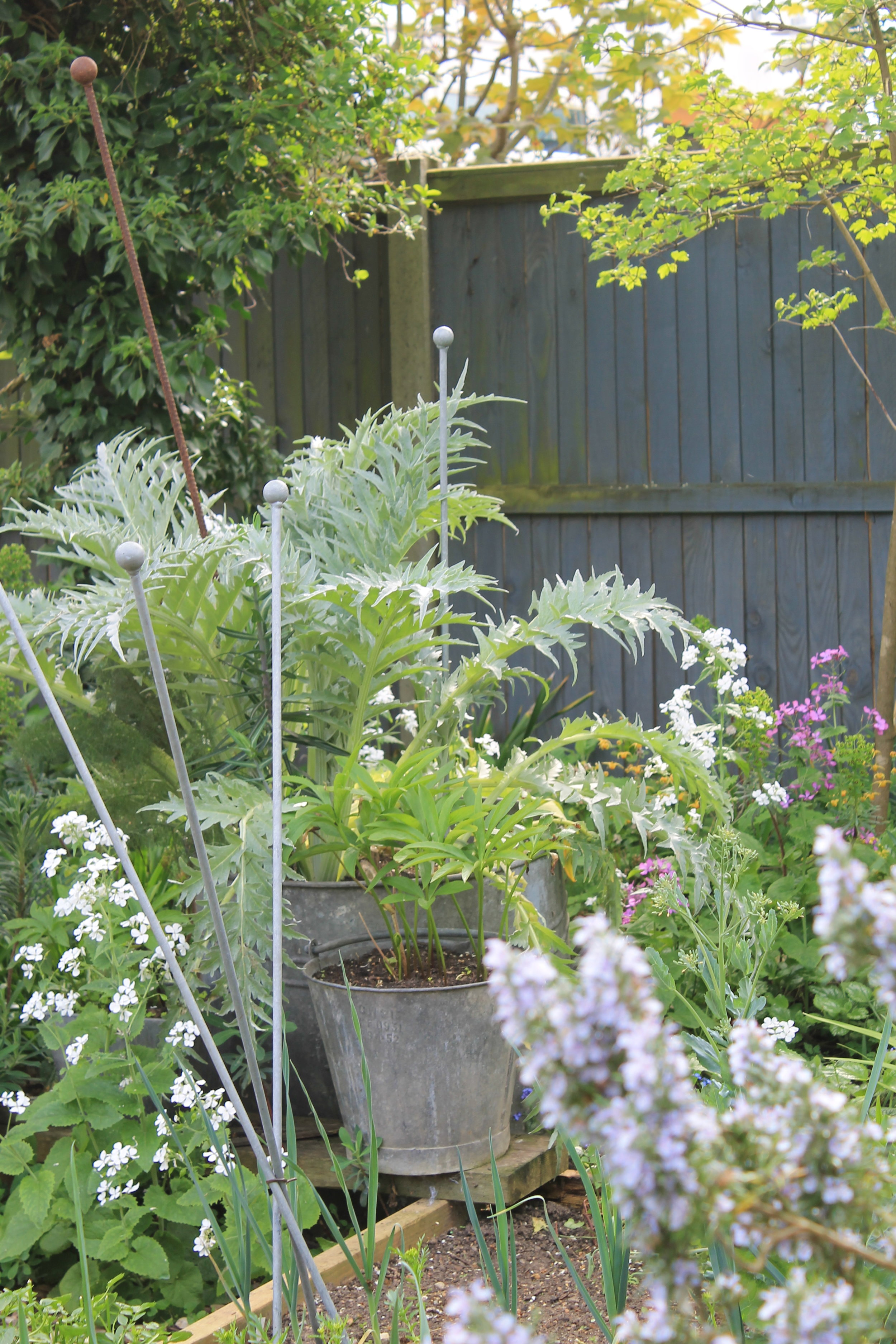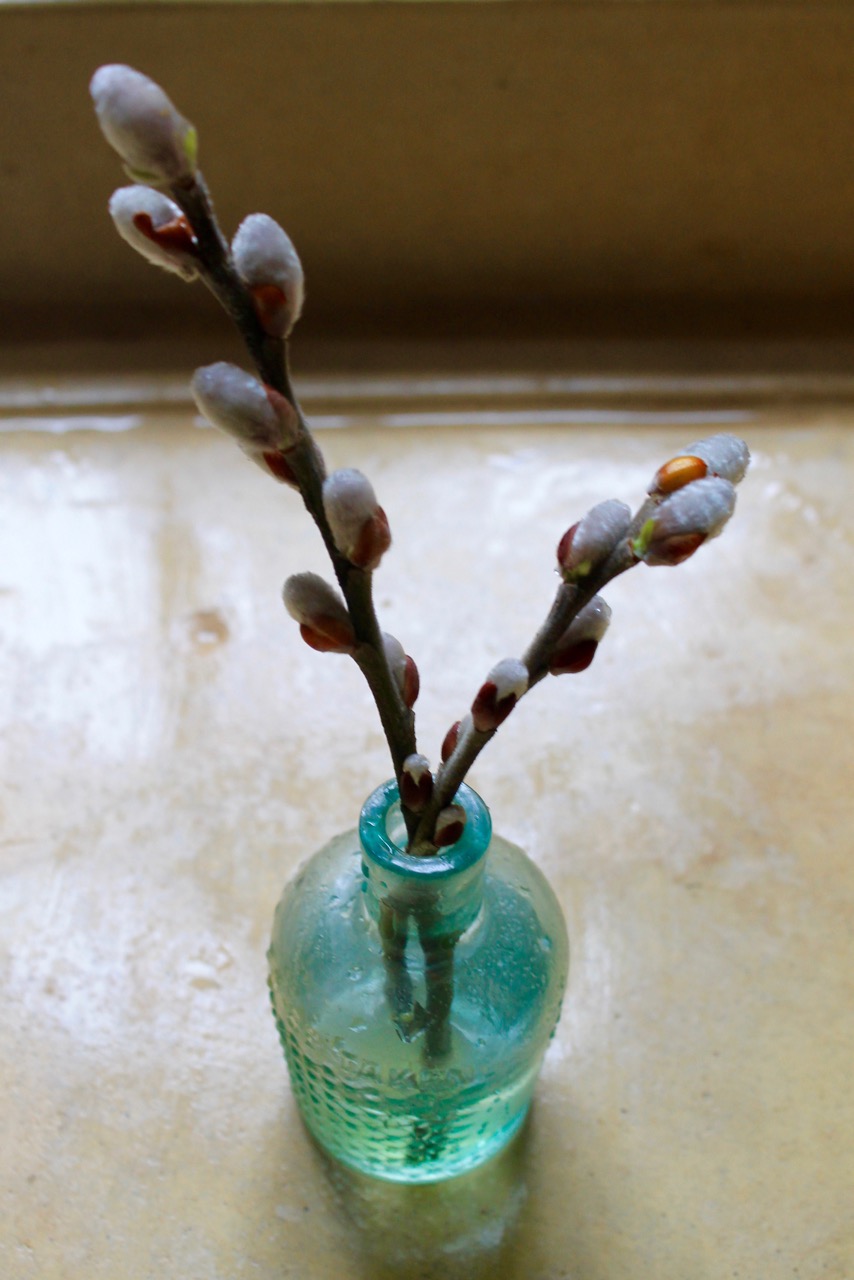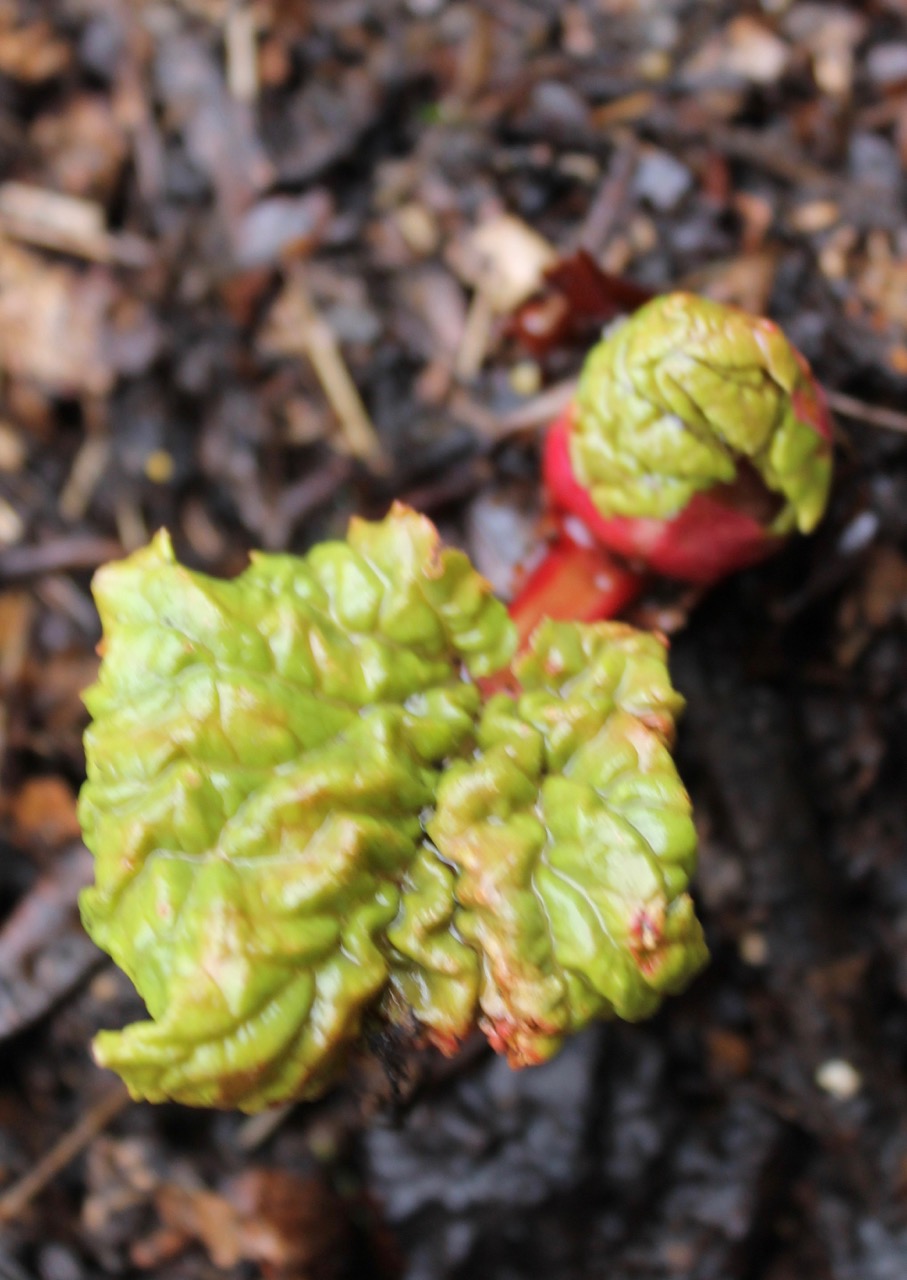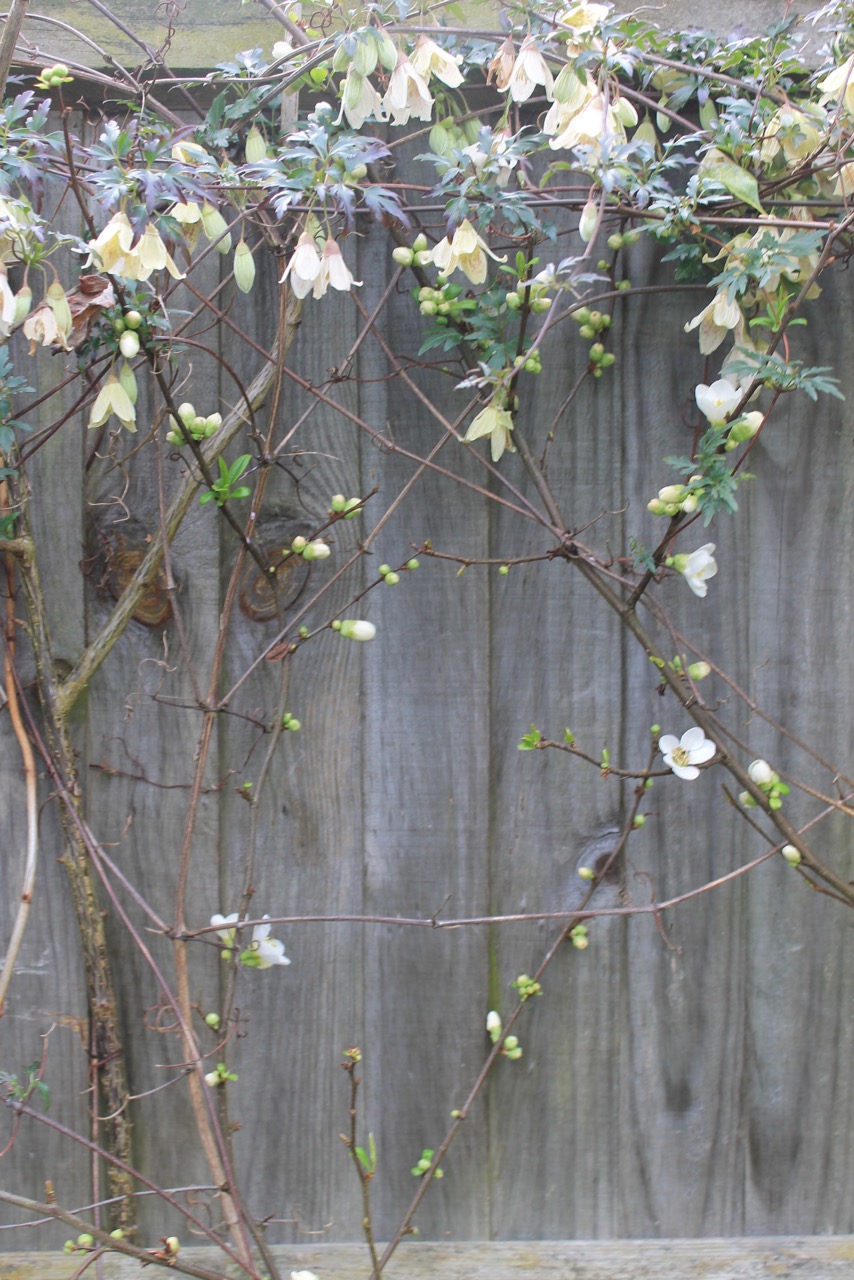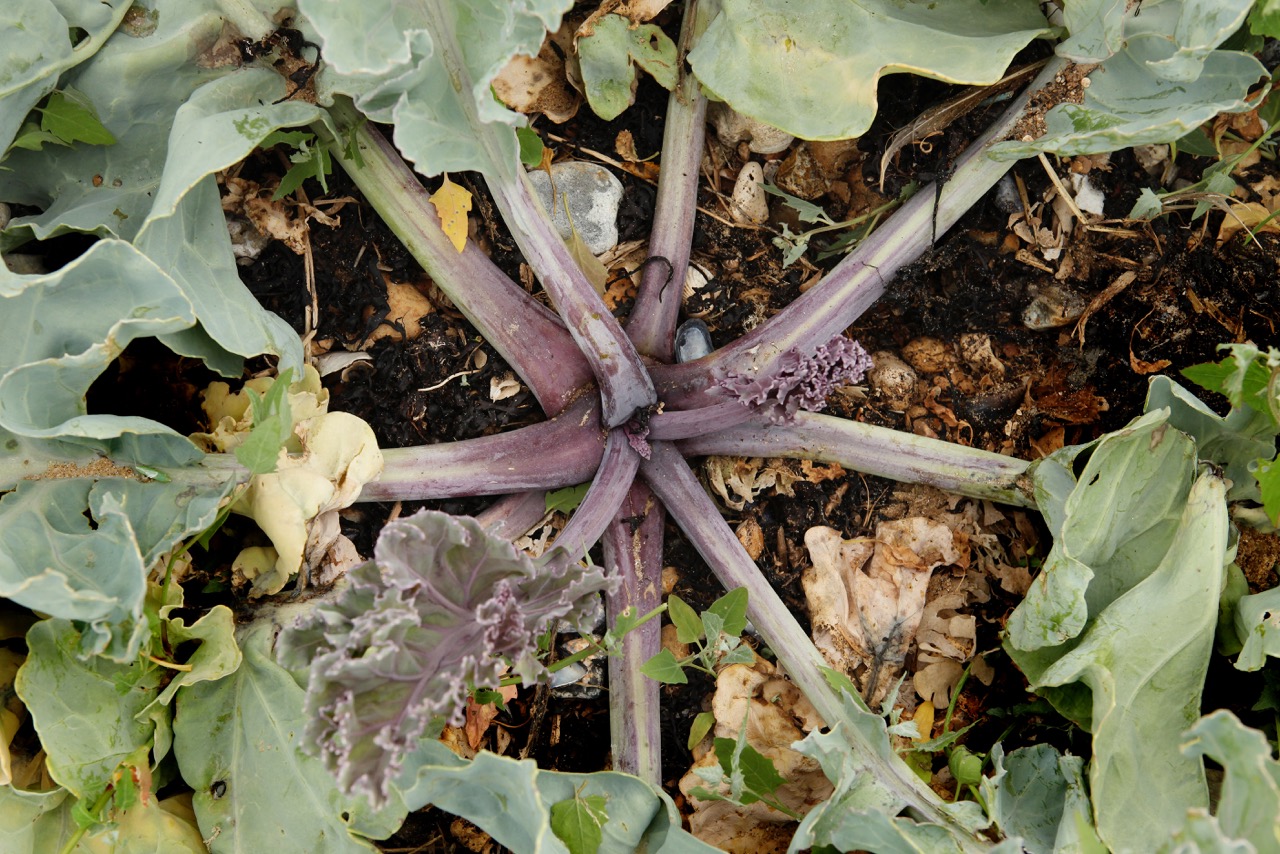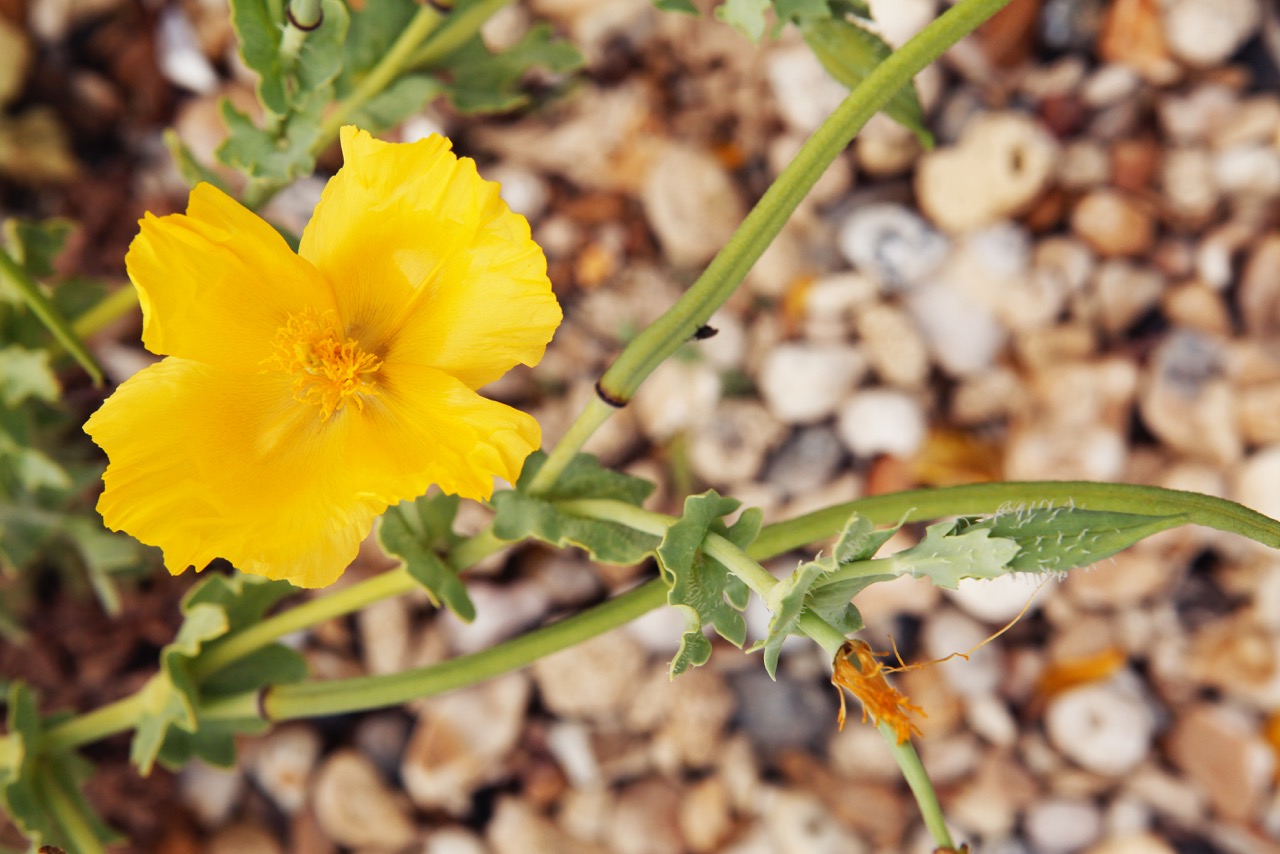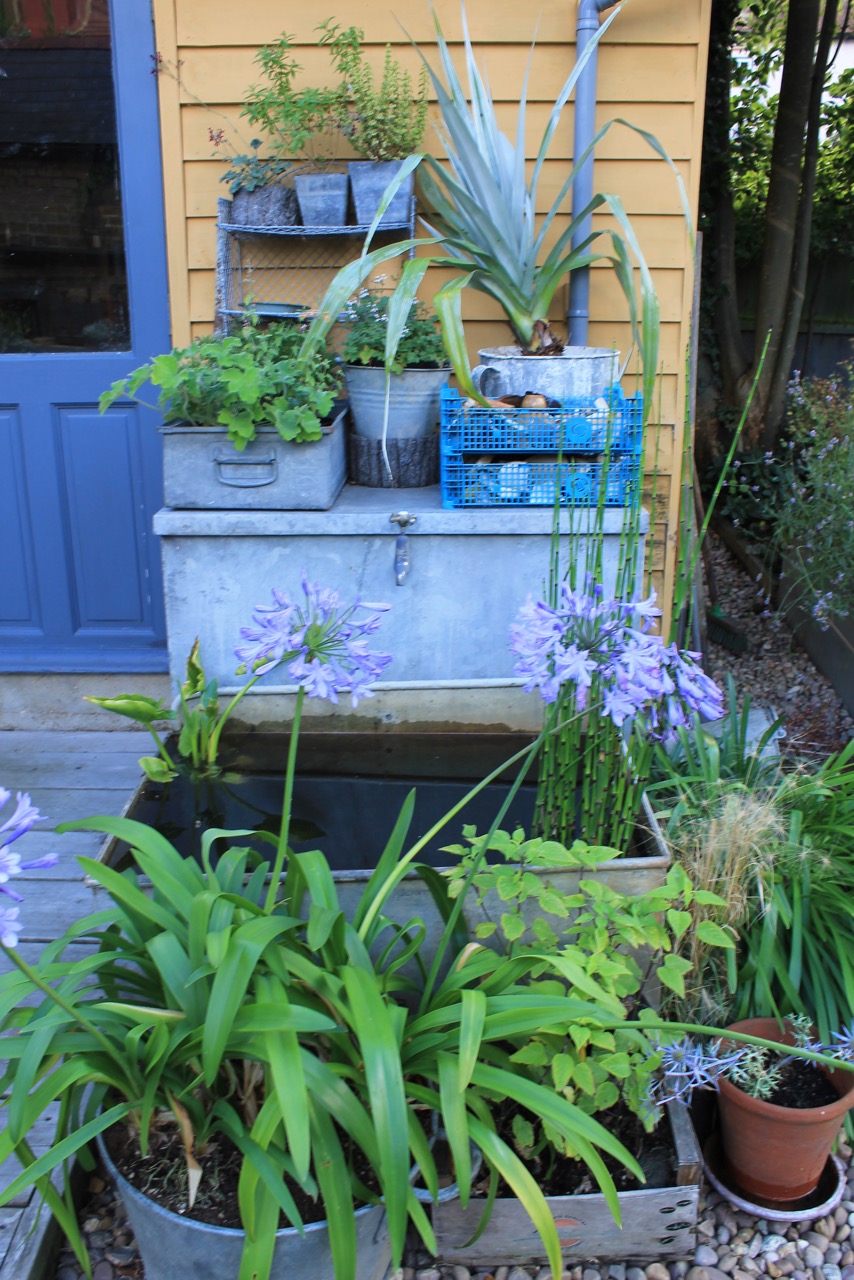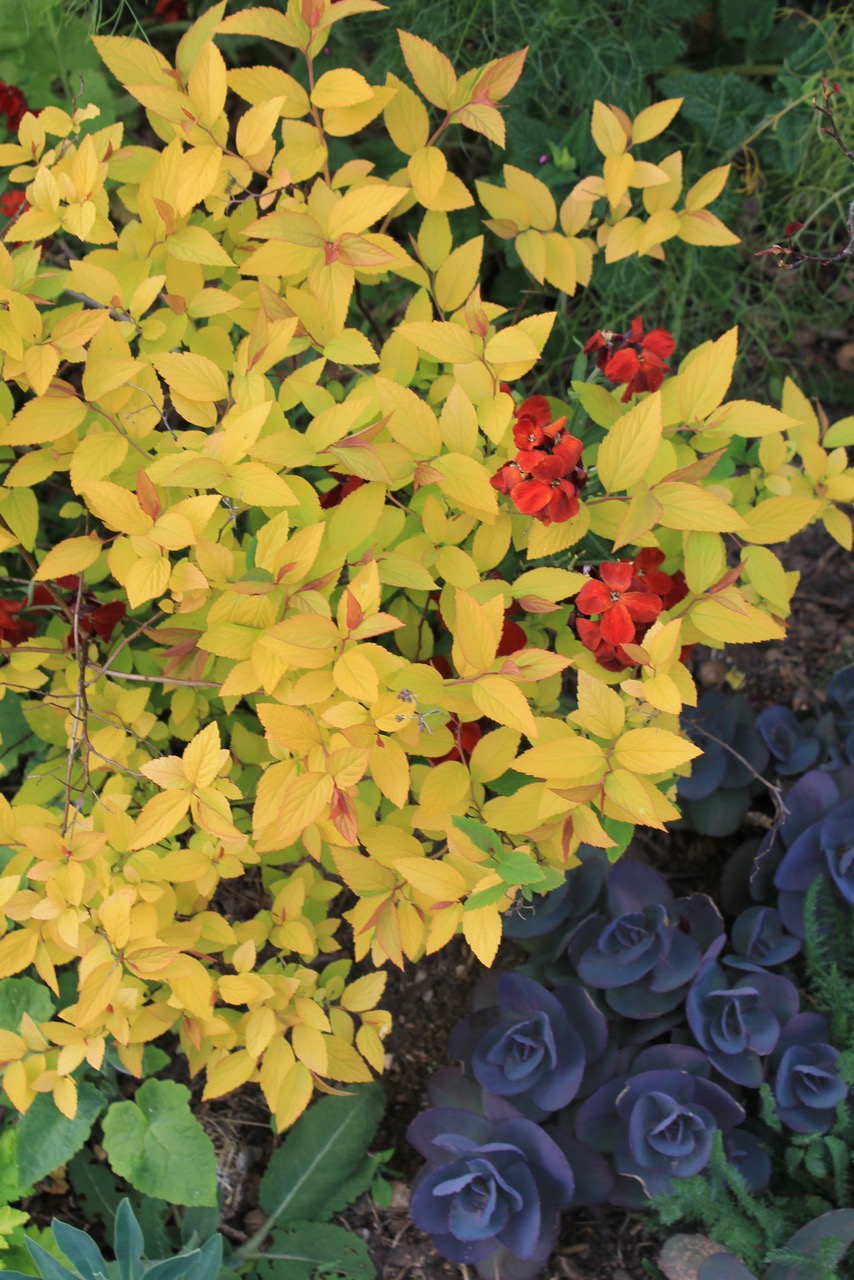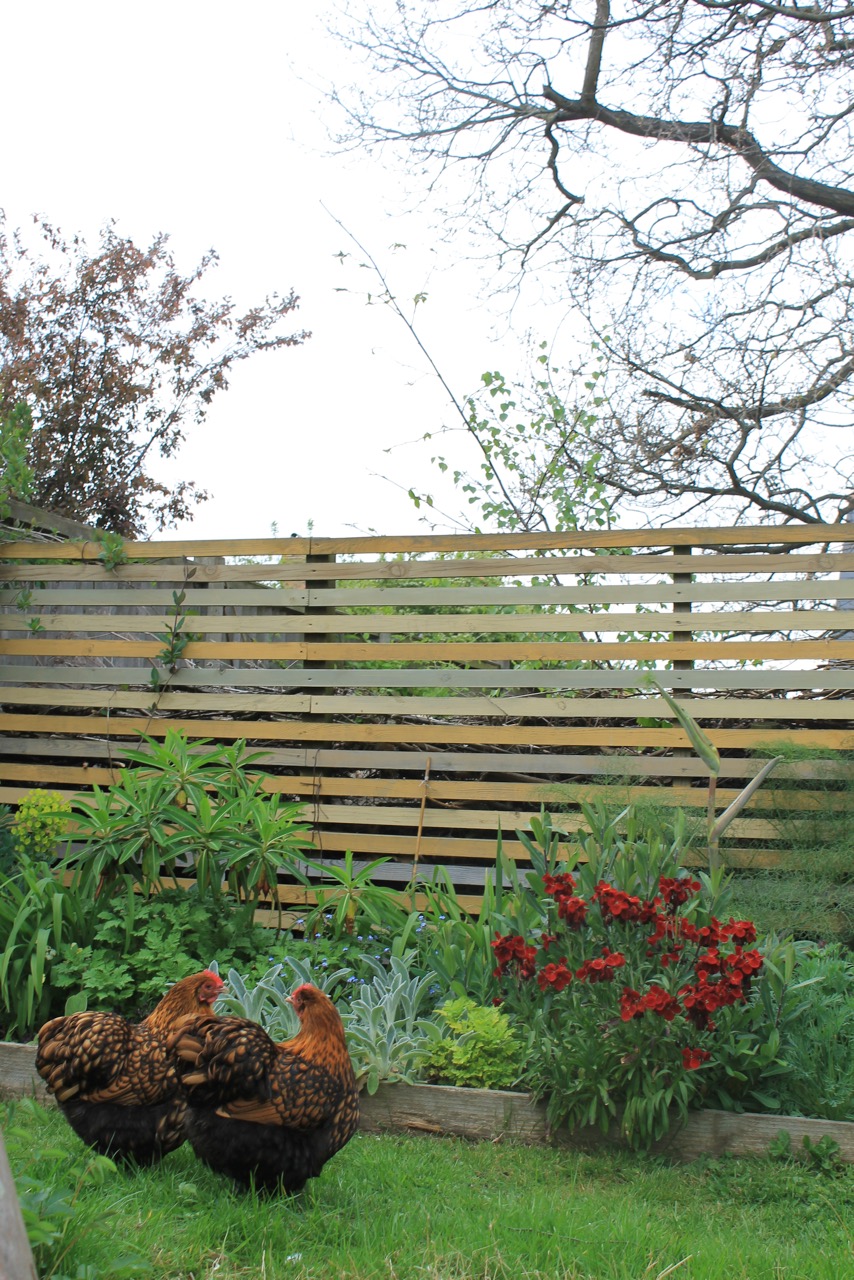Some of us start off with perfect garden soil. Mine is hard yellow Kent clay that may have had lorries driving over it when the house at the bottom of the garden was built – at least it seems so. So every year helped by my friend Martin, as the soil begins to warm up, I mix up barrow-loads of compost and distribute it on every bed, top up every pot and mulch wherever I can.
First, we lay a piece of plastic left by the builders to mix on, and then dismantle last year’s garden compost bay: very good this year, thanks I think to more chicken manure and a top dressing of Sacred Earth Biochar Soil Booster from a community owned organization in East Sussex: sacredearthland.co.uk.
Then we add the lower contents of my Hotbin that has taken all my kitchen waste (including the odd bit of meat and fish) layered with wood shavings from my son’s carpentry workshop. We mix this with leafmould packed into an old builder’s bag that comfortably fits an autumn’s worth of the oak tree leaves, plus a couple of bags of woodchip left by the tree surgeon, particularly good for lightening heavy soils.
The mixture is then scanned for non-compostable bits and pieces that slip in: that old kitchen knife I used to weed the paving, bits of J-cloth that take more than a year, my grandsons’ toys and the inevitable bits of plastic that slip into the wrong bin or seem to form part of plants from nurseries.
We decant this elixir into large pots and Martin manoeuvres them around the garden so I can decant them at my leisure as I tidy and cut back the plants, with help from the hens. Exhausted we sit with a cuppa and discuss the merits of this year’s mix. This has been an epic vintage with compost like cake mix. Thanks to all who contributed.




